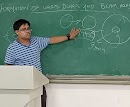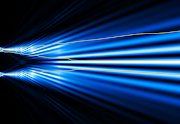Astronomy and Astrophysics
Supernovae and Creation of Heavy metals!!!
Humans are mortal beings…..right???
But do you know that all the objects in visible universe
are also mortal??? They have their own endings!!!
Sound strange…right???
I explained in my previous articles that universe has its own ending…..just like that, in this article you will know about the
last minutes of the stars and how they end up their lives.
Each categories of stars have different ending
depending upon their masses. Generally, most of the stars in universe die after
becoming a red giant, but that’s the topic for another article.
Here, we are discussing about those massive stars
which dies with massive explosion like supernova. Generally, massive supergiant
stars die in this way. More massive stars like hypergiants die with another
phenomenon called hypernova, which is more powerful than supernova.
The total energy output may be 1044 joules,
as much as the total output of the sun during its 10 billion year lifetime. During
this event, it can be much more luminous than the parent galaxy and near-by
local group.
But why does it happens??? Why these supergiants
don’t die like normal stars like sun or like red dwarfs????
As I said before, Supergiants have more mass than a
regular star. That’s why, it creates supernovae whereas regular stars simply
fade way.
The likely scenario is that fusion proceeds
to build up a core of iron. The "iron
group" of elements around mass number
A=60 are the most tightly bound nuclei, so no more energy can be gotten from
nuclear fusion. All stars eventually run out of their hydrogen gas fuel
and die. As the hydrogen runs out, a star with a similar mass to our sun
will expand and becomes a red giant. When a high-mass star has no hydrogen left
to burn, it expands and becomes a red supergiant. Because of its higher mass, when the core collapses
after the hydrogen burning phase the
rapidly increased temperature leads to the fusion of helium very quickly.
Red supergiants quickly collapse,
producing a giant explosion called a supernova. High mass red
supergiants form super-dense neutron stars where the core of
the supergiant (about 1.5 times the mass of the Sun)
has collapsed into a space with a radius of about 12 km and sometimes
also forms black holes from which even light cannot escape. Supernovae are also
responsible for creation of heavy metals like neutron star collision but,
supernovae creates much more amount of heavy metals than neutron star
collisions and that is why there is an abundance of these materials in
universe.
 |
| Crab Nebula |
The left over gases expand further and forms a
beautiful cloud which is called in astronomy as Nebulae and in the centre there
is neutron star. You will find detail analysis of nebulae in my book so, don't forget to check it out!!!
There are many famous examples of nebulae like Cat eye nebulae
or Crab nebulae. These nebulae further helps in the creation of new stars and
by this way the cycle of universe continues.
In my next article, I am going to explain about the
types of supernovae and also tell you about the relation of neutrinos with
supernova….
So, don’t forget to subscribe to our website and follow me on social media for updates…..
To know more about bosons and fermions click here......
To know basics of quantum world, astronomy and space exploration you can check out my book "Through the wormhole" on amazon kindle.
You can directly talk with me on Instagram
To meet more physics Enthusiasts please join our Facebook Page
Also for latest updates of my posts join me on TwitterTo meet more physics Enthusiasts please join our Facebook Page
Thanks for reading.....
See you next time!!!
-Ratnadeep Das Choudhury
Founder and Writer of The Dynamic Frequency













0 Comments